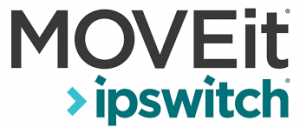With the innovations in mobile technology and the cloud over the last few years, employees are now working from their own devices and remotely from their own homes more than ever. However, these advancements in modern remote tech do not come without their own risks as data becomes more flexible and accessible. This means that the range of attack points for hackers has expanded and innately created a higher possibility of a data breach.
Securing data should be the top priority for all digital workplaces, but it is still quite the ongoing challenge for companies of all sizes. To best protect your organization and its private data, you must develop and implement a proactive cybersecurity strategy that can minimize the risk of a data breach without compromising the experience for the end-user.
The following five steps are absolutely essential to any good offensive cyber-strategy:
- Know your assets. – You cannot figure out where your risks are if you do not know how end-users are accessing your corporate information. Your information technology team should implement a system that is able to “see” and recognize the devices and networks that your employees are using. Ideally, this system should not only be able to identify the users, but also recognize any patterns in their behavior so that irregular or suspicious activity can be identified.
- Adopt the latest tools. – Hackers are going to be using the most updated and advanced technology out there to access your company’s data, which means that you must also be using the latest proactive tech. To combat new and evolving threats, consider implementing artificial intelligence systems, machine learning, and other advanced systems that will be able to help act as automated sentinels that keep watch over your data.
- Make sure there is a cohesive system in place.– Businesses are able to implement many different systems to help protect themselves, but they often forget to connect them together to form one solution. Without all systems intuitively connected and feeding into one another, there will be too much going on at all times to actually ensure that the systems are doing their jobs. Integration can help improve overall security while allowing IT teams to leverage the data in a more seamless way.
- Ensure that a response procedure is created and implemented.– The best defense is a good offense. When it comes to cybersecurity, this means that a plan and procedures must be in place before a cyberattack happens so that everyone knows exactly what to do should a breach occur. This includes implementing deployable tools, platforms, and procedures to allow for a quick and intelligent response.
- Adopt a comprehensive training program. – Training is one of (if not the most) important and essential pieces of an overall security strategy. A company could spend an exorbitant amount of money on software and solutions, but it would be a waste without training for employees. Businesses should implement a regular training program for their employees so that everyone knows exactly what to do if a cyberattack did occur.
It’s time to be proactive and prepare for the worst before a data breach or cyberattack actually happens. Contact Logical Operations now to find out how we can help prepare your company’s offense with cybersecurity training.
Source: http://logicaloperations.com/insights/blog/






